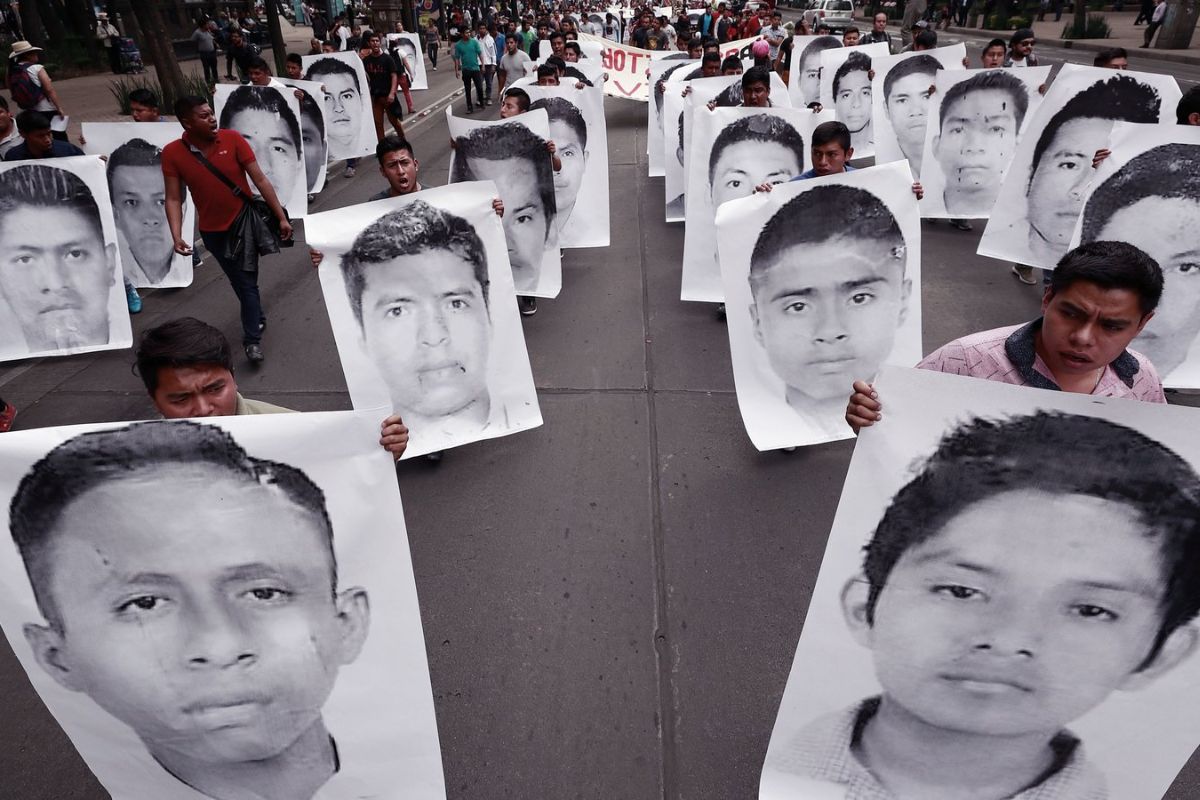Mexican authorities have labeled the 2014 disappearance of 43 students as a “state crime,” which was scandalously covered up by the government, in yet another devastating assessment of the previous administration’s culpability in egregious human rights abuses.
A government commission’s preliminary findings stated that “at all times the federal, state, and municipal authorities had information of the students’ movements.” They contributed to the student’s disappearance, execution, and the deaths of six other persons through their deeds, omissions, and participation.
The September 2014 abduction of the students from the city of Iguala in the country’s southwest and the ensuing cover-up, which involved high-level officials, have long been the subject of resentment and indignation in North America.
International human rights experts criticized the government’s lax approach to uncovering the truth, which resulted in widespread outrage and inflicted a severe blow to the administration of former President Enrique Pena Nieto.
In contrast to the previous administration’s account, President Andres Manuel Lopez Obrador has vowed to make all information regarding the kids public.
Top Mexican human rights official Alejandro Encinas described the involvement of municipal, state, and federal authorities in the disappearances as a “state crime” during a news conference on Thursday.
In the aftermath, he accused the previous administration of “concealing the truth of the facts, altering crime scenes, and covering up the linkages between officials with a criminal group.”
Encinas pointed out that although one of the pupils was a military informant, officials did not follow the proper procedures for locating missing soldiers. The “disappearance and murder of the students would have been prevented” if they had done that, he hastened to add.
According to Encinas, just three pupils’ remains have been found and identified thus far despite thorough searches.
Read More:
Vanessa Bryant Excuses Herself From Court When A Witness Testifies About Seeing Crash Photos From Kobe’s Death
Former Deutsche Bank Co-CEO Anshu Jain Dies Due To Duodenal Cancer
The Rare Medical Condition Of Gaten Matarazzo Explained, Have Cleidocranial Dysplasia By Birth
Jerry Hall And Rupert Murdoch Divorced After Six Years Of Marriage: News, Details, And Rumors
The pupils’ families have long wished for their loved ones to survive and come home in the future. They have chanted “We want them alive” during the several large-scale demonstrations they have held over the course of these years to put pressure on the government to investigate the case of these students.
Encinas hardly ever recognized the students’ deaths in writing.
Read More:
The 43 students, who were attending the Raul Isidro Burgos Rural Teachers’ College in the Mexican state of Guerrero’s city of Ayotzinapa, went missing on September 26, 2014, after being allegedly detained by dishonest police officers while traveling to the city of Iguala in the southwest to take part in a protest.
According to an independent investigation published in December 2014, the officers had given the pupils to neighborhood gang members who then killed them after handing them over to the criminals.
Mexican officials "called the 2014 disappearance of 43 students a state crime that was covered up by the government, in another damning assessment of the previous administration's actions regarding one of Mexico's worst human rights atrocities."https://t.co/VdlIrLQkrz
— Kenneth Roth (@KenRoth) August 19, 2022
The government has not yet been able to find out what happened to the missing students.
Rights organisations have criticised the Mexican government for how it handled the incident, calling it a “stain” on its history of upholding human rights.
In a statement issued in September 2016, Amnesty International claimed that the Mexican government had demonstrated a “reckless approach to human rights.”
There have been widespread protests across the nation as a result of the allegations of police involvement in the tragedy.
